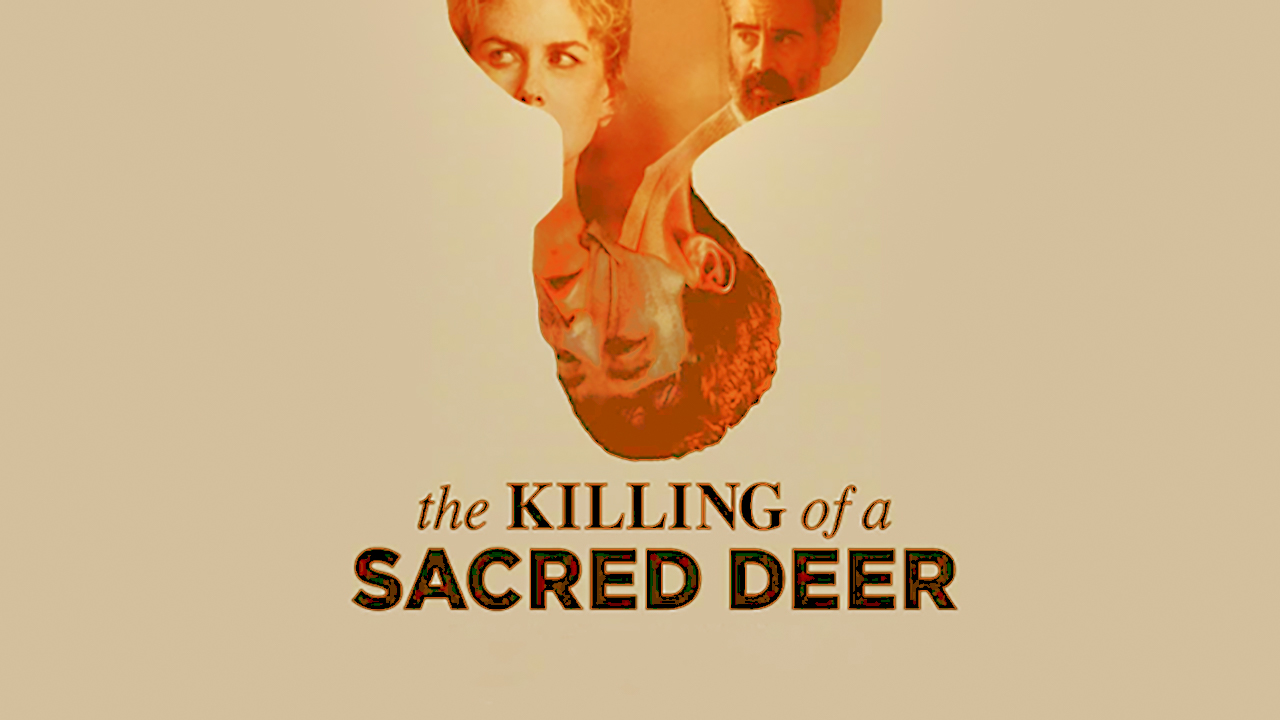The 2017 film “The Killing of a Sacred Deer,” directed by Yorgos Lanthimos, has captivated audiences with its unique storytelling, surreal atmosphere, and chilling themes. It delves into moral dilemmas, familial relationships, and the consequences of one’s actions. Central to this unsettling narrative is the concept of poison—both literal and metaphorical. This blog post will explore the intricacies of this film, particularly focusing on the mystery surrounding what the poison was, its role in the plot, and its broader implications.
Understanding the poison in “The Killing of a Sacred Deer” is essential to grasping the film’s core themes. The poison is not just a physical agent; it symbolizes deeper moral questions, reflects the protagonist’s psychological state, and represents the inescapable nature of fate and retribution. Throughout this blog, we will delve into the film’s plot, analyze theories surrounding the poison, consider scientific perspectives, and examine the cinematic techniques and symbolism employed by Lanthimos.
A Look at “The Killing of a Sacred Deer”

Overview of the Film’s Plot
“The Killing of a Sacred Deer” follows Steven Murphy, a successful cardiac surgeon, and his family as they navigate a disturbing turn of events instigated by a mysterious young man named Martin. Steven befriends Martin, who has an unsettling aura and an unclear motive. As their relationship develops, Martin reveals a dark ultimatum: Steven must sacrifice one of his family members to pay for the life of Martin’s father, whom Steven inadvertently caused to die during surgery. This chilling premise sets the stage for a psychological thriller steeped in moral ambiguity.
Key Characters Involved in the Poisoning Subplot
The central characters are Steven Murphy, played by Colin Farrell; his wife, Anna (Nicole Kidman); their son, Bob (Sunny Suljic); and Martin (Barry Keoghan). Martin’s role as the harbinger of doom is pivotal, as he introduces the poison—both as a literal substance and as a metaphor for guilt and responsibility. Each character’s interaction with the poison amplifies the tension and highlights their moral dilemmas.
How the Notion of Poison Shapes the Narrative
In the film, the poison manifests as a threat to Steven’s family, leading to intense psychological and emotional turmoil. The poison is not merely a tool of vengeance; it is a catalyst for exploring the themes of guilt, sacrifice, and the consequences of one’s choices. As the narrative unfolds, the poison’s influence over the characters becomes more pronounced, underscoring their vulnerabilities and moral failures.
Theories Behind the Poison

Analysis of Direct References in the Film
Throughout “The Killing of a Sacred Deer,” there are subtle references and hints regarding the nature of the poison. While the specific poison is never explicitly named, the symptoms exhibited by Steven’s family—such as paralysis, bleeding from the eyes, and an overall decline in health—suggest a deliberate and insidious toxin. This ambiguity fuels speculation and invites viewers to explore various interpretations.
Common Fan Theories on What the Poison Might Be
Fans of the movie have posited several theories regarding the identity of the poison. Some suggest it could be a neurotoxin, while others speculate it may be a more psychological poison related to Steven’s guilt and the consequences of his actions. The ambiguity allows for a rich tapestry of interpretations, with each theory reflecting different aspects of the film’s overarching themes.
Expert Opinions and Interpretations
Experts in film analysis often highlight the symbolic nature of the poison, interpreting it as a representation of the moral decay and corruption that can arise from unchecked ambition and guilt. The poison serves as a narrative device that forces characters—and by extension, the audience—to confront uncomfortable truths about responsibility and sacrifice. By avoiding a straightforward explanation of the poison, Lanthimos invites deeper reflection and discussion.
Scientific Perspective

Possible Poisons Based on Symptoms Shown
From a scientific standpoint, the symptoms exhibited by Steven’s family could be indicative of various poisons. Some potential candidates include:
- Curare: A muscle relaxant that could cause paralysis and respiratory failure.
- Strychnine: Known for causing convulsions and muscle spasms.
- Botulinum toxin: Produces paralysis and can lead to respiratory failure if not treated.
These poisons align with the film’s portrayal of the family’s deteriorating condition, emphasizing the horror of their situation.
Real-Life Poisons That Match the Film Scenario
In reality, certain poisons have been used throughout history for their deadly effects. For instance, aconitine, derived from the monkshood plant, can cause a range of symptoms including cardiovascular disturbances and neurological effects. Similarly, ricin, a highly toxic protein derived from castor beans, leads to severe organ damage and could metaphorically represent the destructive consequences of guilt and vengeance.
Medical Evaluation of Symptoms Depicted
Medical professionals analyzing the symptoms in the film may suggest that the portrayals are dramatized for cinematic effect but rooted in real physiological responses to toxic substances. The film’s depiction of deterioration serves to heighten the emotional stakes and underscores the urgency of Steven’s moral quandary.
Cinematic Techniques and Symbolism

Use of Poison as a Narrative Device
Lanthimos employs poison as a narrative device to create tension and conflict. The looming threat of the poison drives the plot and forces characters into moral dilemmas. This use of poison parallels the psychological distress experienced by the characters, as they grapple with the implications of their actions.
Symbolic Meaning and Thematic Elements of Poison
The poison in “The Killing of a Sacred Deer” symbolizes more than just a physical threat; it embodies themes of guilt, sacrifice, and the inescapability of fate. The film explores how individuals confront their moral failings and the lengths they will go to protect their loved ones. In this way, the poison serves as a metaphor for the toxic consequences of their choices.
Director’s Style and Intent with the Poisoning Theme
Lanthimos’s unique directorial style enhances the film’s exploration of poison. The unsettling atmosphere, coupled with stark visual imagery and haunting sound design, immerses the audience in the psychological horror of the characters’ predicaments. By focusing on the poison as a thematic element, he encourages viewers to engage with the moral complexities presented in the narrative.
FAQs
What Symptoms Did the Poison Cause in the Film?
In “The Killing of a Sacred Deer,” the poison causes a range of severe symptoms, including paralysis, gastrointestinal bleeding, and ultimately death. The graphic portrayal of these symptoms serves to heighten the film’s tension and underscore the stakes involved in Steven’s moral dilemma.
How Does the Film Indicate What the Poison Is?
The film does not explicitly identify the poison, allowing for a range of interpretations. Hints can be found in the symptoms exhibited by the characters and the ominous atmosphere surrounding Martin’s demands, leaving viewers to speculate about the true nature of the toxin.
Are There Any Clues About the Poison in Dialogue?
While the dialogue does not provide explicit answers about the poison, it is rich with implications and moral questions. Characters discuss themes of guilt, responsibility, and sacrifice, which can be interpreted as clues to the deeper significance of the poison within the story.
How Does the Poison Reflect the Film’s Themes?
The poison is a direct reflection of the film’s exploration of guilt, retribution, and the consequences of one’s actions. It serves as a constant reminder of the characters’ moral failings and the inevitable reckoning that follows their choices.

Conclusion
In “The Killing of a Sacred Deer,” the poison plays a crucial role in the narrative, serving as both a literal threat and a metaphor for the characters’ internal struggles. By examining the various theories surrounding the poison, its scientific implications, and its symbolic meaning, we gain a deeper understanding of the film’s themes of guilt, sacrifice, and the complexities of moral decision-making.
The unresolved mystery of the poison leaves audiences with lingering questions and a sense of unease, prompting them to reflect on their interpretations of the film. Lanthimos’s masterful storytelling and thought-provoking themes ensure that “The Killing of a Sacred Deer” will continue to resonate with viewers long after the credits roll, challenging them to confront the darker aspects of human nature and the inevitable consequences of our choices.
By exploring the layers of meaning behind the poison, we are reminded of the complexities of morality and the often devastating effects of our actions—an enduring theme that speaks to the heart of the human experience.

